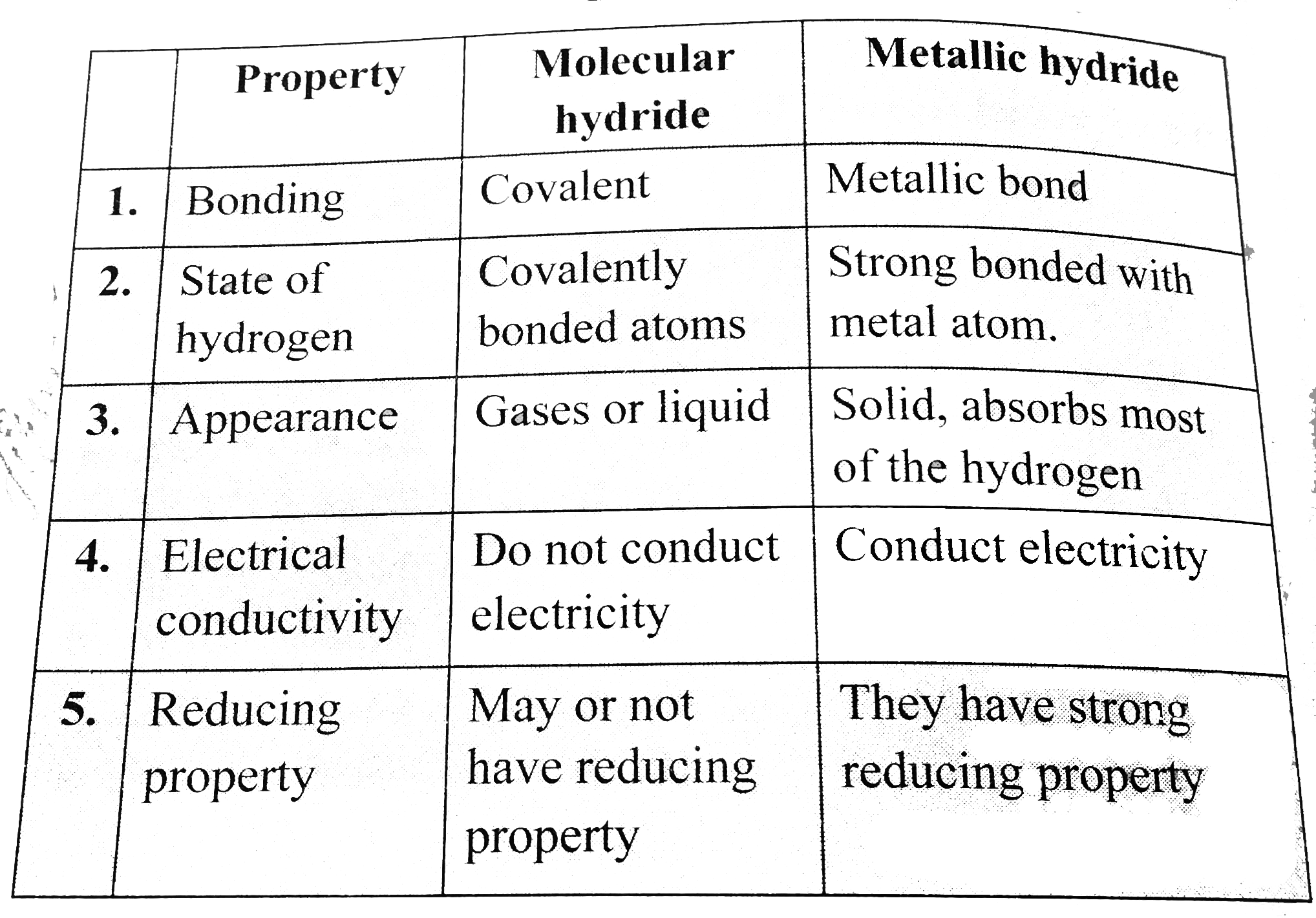What are metallic interstitial hydrides? How do they differ from molecular hydrides?
Metallic / Interstitial hydrides

Topper's Solved these Questions
- HYDROGEN, WATER AND HYDROGEN PEROXIDEBOOK - CENGAGE CHEMISTRYCHAPTER - HYDROGEN, WATER AND HYDROGEN PEROXIDEEXERCISE - Exercises (Linked Comprehension )
20 Videos
- HYDROGEN, WATER AND HYDROGEN PEROXIDEBOOK - CENGAGE CHEMISTRYCHAPTER - HYDROGEN, WATER AND HYDROGEN PEROXIDEEXERCISE - Exercises Multiple Correct
19 Videos
- HYDROGEN, WATER AND HYDROGEN PEROXIDEBOOK - CENGAGE CHEMISTRYCHAPTER - HYDROGEN, WATER AND HYDROGEN PEROXIDEEXERCISE - Ex 3.1
4 Videos
- GENERAL ORGANIC CHEMISTRYBOOK - CENGAGE CHEMISTRYCHAPTER - GENERAL ORGANIC CHEMISTRYEXERCISE - Analytical and Descriptive
1 Videos
- IONIC EQUILIBRIUMBOOK - CENGAGE CHEMISTRYCHAPTER - IONIC EQUILIBRIUMEXERCISE - Archives Subjective
28 Videos
Similar Questions
Knowledge Check
Which of the following is interstitial hydride?
ACaH2BCuHCPH3DNaHWhich among the following is interstitial hydride?
AScH2BLaH2CTiH1.7DAll of theseBe and Mg from amongst the p-block elements and most of the d-block elements give metallic or interstitial hydrides on reacting with hydrogen. The density of each compound is less than that of the metal itself and the properties are not much different from that of the metal. They give out hydrogen easily and are strong reducing agents. This suggests that hydrogen is present in the atomic state. these compounds are non-stoichiometric. the f-block elements (i.e., lanthanide and actinides) also form non-stoichiometric hydrides. These hydrides have lower densities than their respective metals. The metals of group 7,8 and 9 do not form hydrides. This region of the periodic table is called 'hydride gap'.
Interstitial hydride can not be used as,Astoring H2BCatalysts for hydrogenation reactionCRocket propellantDElectric conductor
Write two uses of interstitial hydrides .
View SolutionWhat type of elements form interstitial hydrides ?
View SolutionMetallic Hydrides
View SolutionWhat is a hydride ion ?
View SolutionBe and Mg from amongst the p-block elements and most of the d-block elements give metallic or interstitial hydrides on reacting with hydrogen. The density of each compound is less than that of the metal itself and the properties are not much different from that of the metal. They give out hydrogen easily and are strong reducing agents. This suggests that hydrogen is present in the atomic state. these compounds are non-stoichiometric. the f-block elements (i.e., lanthanide and actinides) also form non-stoichiometric hydrides. These hydrides have lower densities than their respective metals. The metals of group 7,8 and 9 do not form hydrides. This region of the periodic table is called 'hydride gap'.
Which of the following has highest electrical conductance?
View Solution
